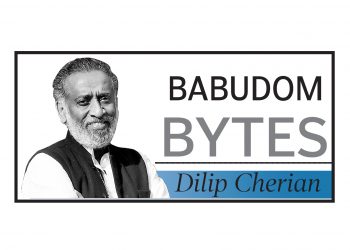Two years after his highly publicized ouster from the Central Bureau of Investigation (CBI), its former Special Director Rakesh Asthana has been named Director General of the Border Security Force (BSF). Interestingly, he continues to hold additional charge of Director General, Narcotics Control Bureau (NCB). Checking narcotics smuggling remains a big concern; and in the BSF, which patrols the borders, Asthana as DG is back in a position where he can play a more active role.
Asthana has served in the state government and at the Centre where he served twice in the CBI. The 1984-batch IPS officer from the Gujarat cadre also did a low-profile stint at the Bureau of Civil Aviation and Security.
At the CBI, he was involved in investigating many high-profile cases. During his first stint in the agency, he investigated the fodder scam, which resulted in the conviction of former Bihar chief minister Lalu Prasad Yadav. He also achieved signal success in building a water-tight case for the extradition of escaped liquor baron Vijay Mallya from the UK. He led CBI’s case in the UK courts. In Gujarat, he served in crucial posts such as Vadodara’s police commissioner under then chief minister Narendra Modi.
Murmu rattles IA&AS
The appointment of former Lt Governor of Jammu & Kashmir, GC Murmu as India’s Comptroller and Auditor General (CAG) has not been welcomed by the Indian Audit & Accounts Service (IA&AS) officers. It is being seen as yet another instance of the dominance of the IAS cadre over other all-India services. Not that it’s been known to make any difference to this Sarkar once it has made up its mind!
Sources say that in becoming CAG, Murmu who is from the 1985-batch Gujarat cadre of the IAS, has superseded at least six IA&AS officers. But he is not the first IAS officer to become the nation’s top auditor. Murmu’s immediate predecessor, Rajiv Mehrishi, was from the 1978 IAS cadre, and he too had followed Shashikant Sharma, who belonged to the 1976 batch. Many would also remember CAG Vinod Rai, a 1972-batch IAS officer. Apparently, the last IA&AS officer to become CAG was A Baksi whose tenure ended in 1978.
Since then, CAGs have been from the tribe of the “heaven-born”; but, clearly, the IA&AS officers who have lost the race to become CAG are unwilling to accept the IAS “outsiders”. Will the current resentment subside “naturally” or will Murmu face rough weather? We’ll have to wait and see.
Tell-all tales
The arrival of “tell-all” books by Viral Acharya and Urjit Patel has whetted the curiosity of many who are looking to find some skeletons tumble out.
Both economists did stints at RBI and left in more or less similar circumstances – before the end of their terms. While Patel was RBI governor, Acharya is a former deputy governor of RBI, who quit six months before his tenure ended in 2019.
According to Acharya, Patel quit because of several attempts to undermine the autonomy of the bank by the government. It was something that was widely discussed in the media at that time. However, Patel had claimed that he had resigned for “personal reasons”, although it was widely speculated that one reason he disagreed with the government was on the issue of parting with the central bank’s reserves. However, he seems to have mended fences now as he has been appointed as chairman of the National Institute of Public Finance and Policy.
Acharya, too, quit after a series of spats with government officials. His book was published close on the heels of Patel’s book which provides a glance into how India’s bankruptcy code was weakened by several stakeholders within the broader banking system. Acharya has argued that numerous policies “regressed” the economic climate in the country while he was deputy governor between early January 2017 and mid-July 2019.
Share a babu experience! Follow dilipthecherian@twitter.com . Let’s multiply the effect.
